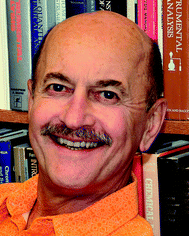Atomic spectrometry: 2010
Gary Hieftje
There are many things about which we in our field can despair. The current economic climate has placed serious constraints on most things, including the purchase of atomic spectrometric instrumentation, the hiring of people in atomic spectrometry, the willingness of instrument manufacturers to introduce innovative products, and the funding of basic research. This last problem is exacerbated by the fact that many funding agencies, industrial laboratories, and even instrument companies view atomic spectrometry as a “solved problem”. Why, they question, should money be invested in a technique that already suffers only limited matrix interferences, offers detection limits at the parts per quadrillion level, and boasts precision levels of 5% rsd? In large part as a result of this perception, there are now apparently only two research groups in the United States who receive funding from Federal sources for basic research in atomic spectrometry.
In turn, limited research funding translates into fewer research groups, whether they are in academic institutions, government laboratories, or industry. The same trend discourages young people from entering the field, so it becomes unclear from where the next generation of atomic spectrometrists might come. In an unfortunate cycle, the declining number of research groups and of young people entering the field translates into reduced proposal pressure on funding agencies, so the “solved problem” perception is strengthened and an even smaller fraction of proposals is funded.
A parallel trend that is equally unfortunate is the declining number of vendors that offer atomic spectrometric instrumentation. Hardly a month goes by without an announcement that some instrument firm has been acquired by another, larger one. Often, the acquisition is accompanied by the eventual disappearance of one or more products from the marketplace, in large part because the two firms that merged offered similar systems. The result is lower market pressure and less competition, which translates into a lessened incentive for innovation and stagnating analytical capabilities. There is little inducement for an instrument company to introduce a truly novel piece of equipment that will compete with its own existing offering; an increase in market fraction from, say, 30%–35% is not much justification for a substantial investment in development. It is no doubt for this reason that many of the more inventive new products that have been offered over the recent few years are by instrument firms that had little or no presence in a particular area beforehand.
This rather bleak picture is offset largely or completely by a brief examination of some of the recent accomplishments and opportunities in Analytical Atomic Spectrometry. A number of converging factors, including the energy crisis, global warming, population pressure, the developing third world, and others are engendering an increased demand for analytical services and for novel instrumentation. The growing realization that speciation is at least as important as elemental identities and concentrations, and the increasing knowledge that the identity and concentration of metals in biomolecules is critical is leading not only to new journals (e.g. Metallomics) but also to new Centers of Analytical Science, research groups with renewed vigor and a changed emphasis, and modified offerings by instrument firms. Indeed, occasionally these factors combine to generate Centers sponsored by instrument firms in academic institutions.
This confluence of factors has resulted recently in some astonishing new capabilities in Analytical Atomic Spectrometry. At the 2010 Winter Conference on Plasma Spectrochemistry, it was announced that ICP-MS detection limits have been pushed down to the level of 50 parts per quintillion (0.05 ppq), and that an instrument throughput from the sample solution to the ion detector as high as 2% has been realized. At the same conference, it was announced that a new commercial mass spectrometer is being readied for market that will employ a sector-field geometry and a parallel array of ion detectors that can span, simultaneously, the entire atomic mass range and at two different levels of gain. Similarly amazing results have been announced by Scott Tanner and his group at DVS Science, who now have shown it possible to detect single mammalian cells that have been tagged with unique combinations of rare-earth isotopes. The ultimate goal is to enable the detection, identification, and quantification of individual leukemia stem cells.
New capabilities are also waiting in the wings. There is currently under development an entirely new kind of mass spectrometer, based on a distance-of-flight (DOF) concept. Similar to time-of-flight (TOF) mass spectrometry in geometry, the new approach employs an array of detectors positioned parallel to the flight path of a TOF system. Like a sector-field mass spectrometer, the DOF approach employs multiple channels for greater efficiency and dynamic range, but unlike a sector-field system it has no upper-mass limit, making it attractive not only for atomic species but also for biomolecules. Another important offering that nears completion is the development of a new glow discharge-time of flight mass spectrometer as part of a European Union collaborative project.
The human-resource component of Analytical Atomic Spectrometry is also not as bleak as the earlier brief overview would suggest. A quick glance at the Young Analytical Scientists March, 2010 issue of JAAS reveals the large number of highly talented, dedicated, and insightful young scientists that are entering the field. A similarly positive impression will be gained by a review of the members of the advisory boards of JAAS and other journals dealing exclusively or in part with the field of Analytical Atomic Spectrometry.
The question then becomes whether the present situation is encouraging or bleak; to a large extent, the question is a result of perspective: whether one views a glass as being half empty or half full. From my perspective, the field of Analytical Atomic Spectrometry is promising, exciting, and fun. We are all part of one of the most wonderful, positive, and supportive communities in science and must work together to keep it so.
| This journal is © The Royal Society of Chemistry 2010 |

